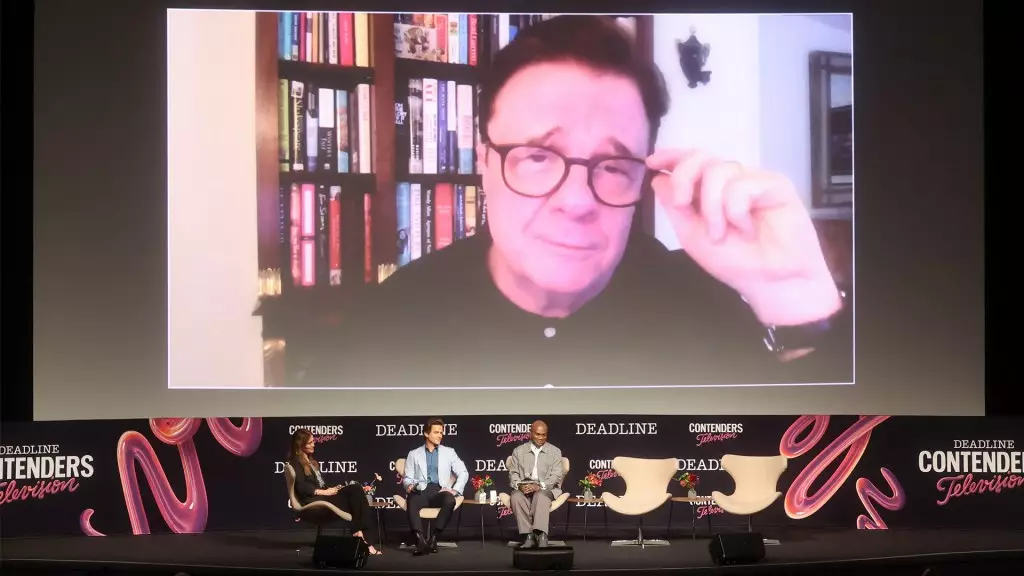In an era where the political landscape presents challenges for LGBTQ+ communities worldwide, the new Hulu sitcom *Mid-Century Modern* emerges as a refreshing beacon of hope and humor. Starring a triumvirate of theatrical veterans—Nathan Lane, Matt Bomer, and Nathan Lee Graham—this multi-camera series doesn’t merely offer laughs; it serves as a timely reminder of the importance of visibility and the power of representation in storytelling for marginalized groups. Their personal experiences and perspectives breathe life into the show, affirming a shared mission: to create moments of joy and sanctuary in a glaringly unforgiving climate.
Finding Sanctuary in Laughter
The narrative centers around three older gay men who start anew in Palm Springs after losing a dear friend. Each character contributes to a rich tapestry of life lessons framed by humor and affection, creating a “found family” dynamic that resonates deeply with audiences. Lane’s character, Bunny, a bra chain mogul, embodies the fortitude and comedy needed to navigate life’s tribulations alongside his friends Jerry and Arthur, portrayed by Bomer and Graham, respectively. This setup doesn’t merely cater to laughter; it constructs an emotional refuge that celebrates the spectrum of LGBTQ+ experiences—joy, sadness, and every nuance in between.
According to Lane, the backdrop of the series feels more relevant than ever amidst apprehensions of authoritarian governance threatening personal freedoms. The cast openly discusses this weighty concern while remaining unapologetically dedicated to delivering authentic and sincere representation. They underscore that it’s crucial for current narratives to uplift and empower LGBTQ+ stories, removing the power of shame and instead showcasing unabashed joy and acceptance, as evidenced by their dynamic performances.
Legacy and Loss
The production of *Mid-Century Modern* faced emotional hurdles, especially with the passing of the beloved Linda Lavin, who portrayed Bunny’s mother, Sybil. Lavin’s untimely death occurred just three episodes shy of completion, marking a poignant moment for both cast and crew. This resonates with Graham’s sentiment that portraying characters without shame is liberating. As the actors navigated their grief, the series took on the task of crafting a heartfelt tribute to her character’s departure, encapsulating both the pain of loss and the beauty of fond remembrance.
The decision to dedicate an episode to Sybil’s death serves not only as a private homage to Lavin’s legacy but also resonates with viewers experiencing similar situations. This duality of humor and sorrow reflects the natural ebb and flow of life, particularly in a space where communication and candor serve as powerful tools for connection.
Real Laughter, Real Joy
Addressing concerns surrounding the authenticity of the show’s laughter, Graham affirmed during the panel discussion that the humor is genuine, stemming from a live studio audience rather than a pre-recorded laugh track. This aspect significantly affects the authenticity of the comedic flow in *Mid-Century Modern*. While critics may argue about its potential reliance on laughter as a crutch, the truth is that laughter, when organic, enriches the viewing experience. Audiences find themselves entangled in the characters’ journeys, laughing not just at the punchlines but with each other, forming a collective experience that fosters community.
Such vibrant storytelling is what television needs to evolve. Distinctive narratives that blend sincere emotional experiences with humor can radically reshape cultural dialogue around LGBTQ+ issues. Rather than capitulating to stereotypes or caricatures, *Mid-Century Modern* is daring in its vulnerability, a stark contrast to representations often found in mainstream media.
While this article refrains from delivering a direct summary, it leaves readers with an understanding of the significance and implications of *Mid-Century Modern*. The show is a powerful commentary that celebrates joy despite adversity, illuminating the lives of LGBTQ+ individuals while advocating for deeper patience and understanding in a world craving authenticity. These three charismatic stars not only bring their laughter to an increasingly serious landscape but also invite everyone to join in their celebration of life, love, and the unquenchable spirit of resilience.

